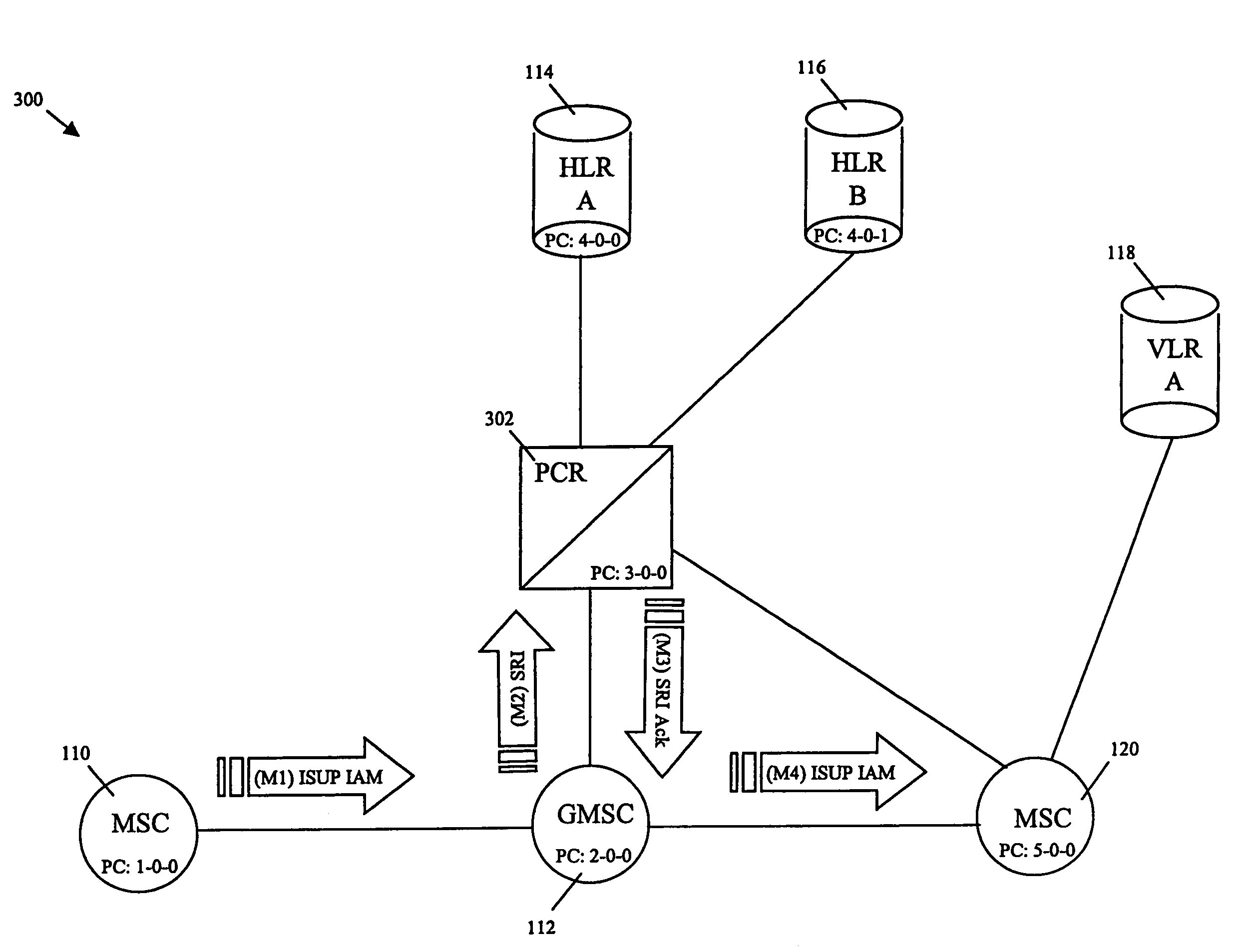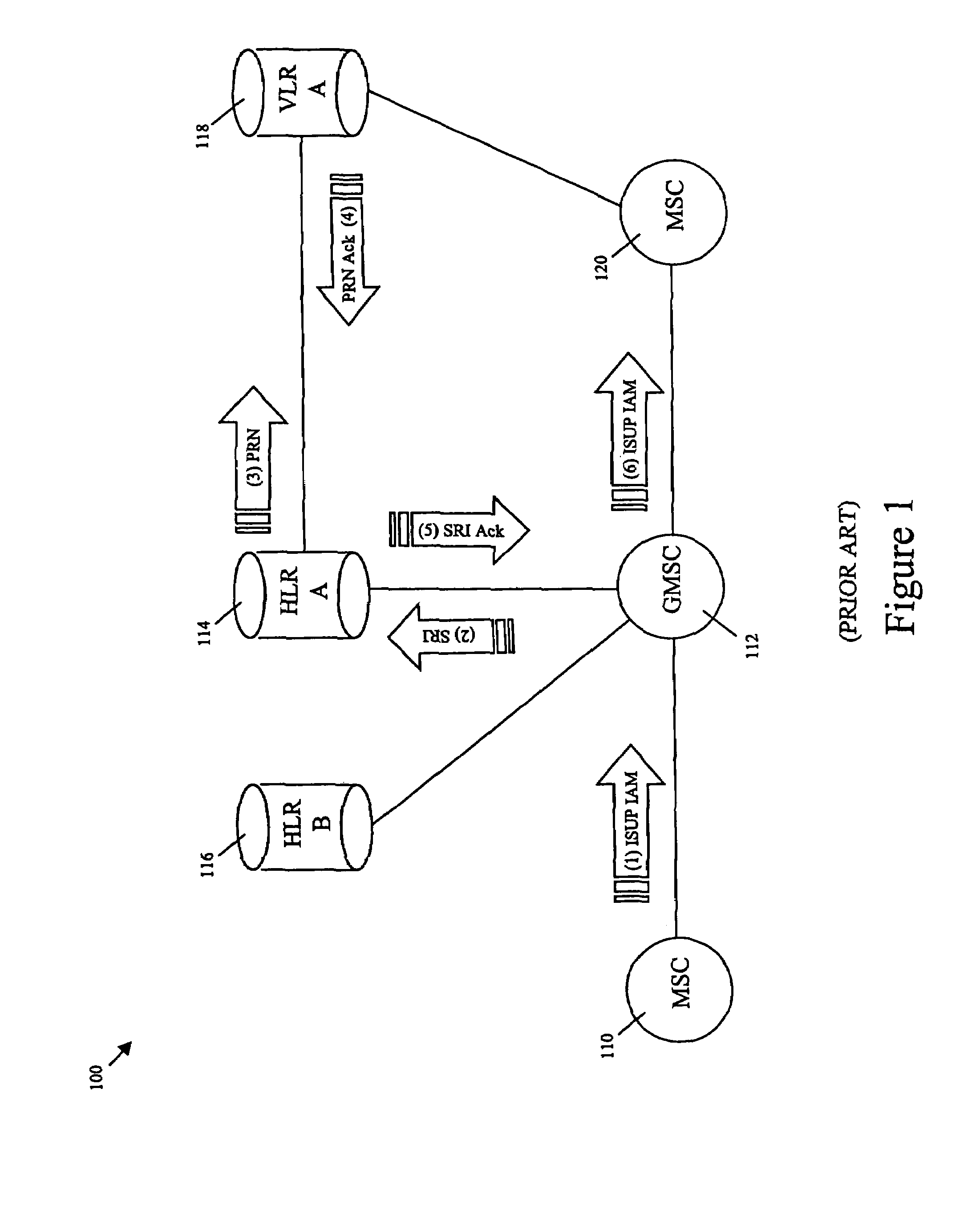Methods and systems for routing messages associated with ported subscribers in a mobile communications network
a mobile communication network and signaling message technology, applied in the field of routing of signaling messages in a wireless communication network, can solve the problems of limited routing capability of a gmsc, significant more complicated call setup scenarios may be encountered in real-world network implementations, and service providers are not able to alter these blocks of assigned numbers within a given hlr unit, so as to efficiently route signaling messages associated, efficient utilization of network resources, and flexibility in allocating mobile identification numbers among multipl
- Summary
- Abstract
- Description
- Claims
- Application Information
AI Technical Summary
Benefits of technology
Problems solved by technology
Method used
Image
Examples
Embodiment Construction
[0045]Disclosed herein are several embodiments of the present invention, all of which include a network element that performs functions similar to that of a telecommunications network packet routing switch, such as a signal transfer point (STP) or a signaling gateway (SG) routing node. As used herein, the term “signaling gateway” refers to a packet routing node capable of routing call signaling messages between nodes of different protocols, such as SS7 nodes and IP nodes. Each of the embodiments described below employs an internal architecture similar to that of high performance STP and SG products which are marketed by the assignee of the present application as the Eagle® STP and IP7 Secure Gateway™, respectively. A block diagram that generally illustrates the base internal architecture of the IP7 Secure Gateway™ product is shown in FIG. 3. A detailed description of the IP7 Secure Gateway™ may be found in Tekelec publication PN / 909-0767-01, Rev B, August 1999, entitled Feature Noti...
PUM
 Login to View More
Login to View More Abstract
Description
Claims
Application Information
 Login to View More
Login to View More - R&D
- Intellectual Property
- Life Sciences
- Materials
- Tech Scout
- Unparalleled Data Quality
- Higher Quality Content
- 60% Fewer Hallucinations
Browse by: Latest US Patents, China's latest patents, Technical Efficacy Thesaurus, Application Domain, Technology Topic, Popular Technical Reports.
© 2025 PatSnap. All rights reserved.Legal|Privacy policy|Modern Slavery Act Transparency Statement|Sitemap|About US| Contact US: help@patsnap.com



